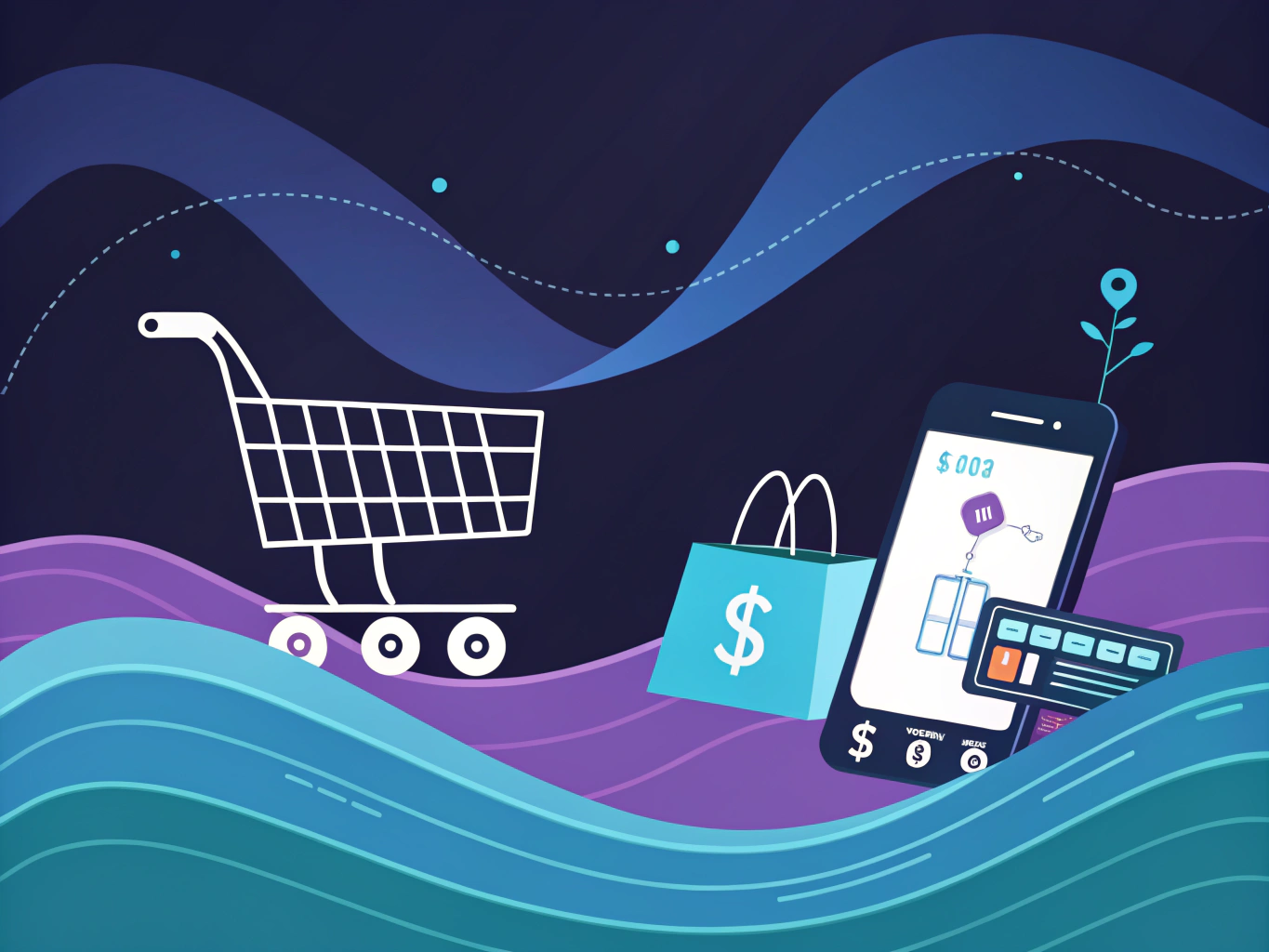The SHEIN Phenomenon: Understanding Ultra-Fast Fashion’s Price Mystery
Let’s talk about the elephant in the retail room: SHEIN’s seemingly impossible prices. You’ve probably seen them – $4 tops, $8 dresses, and entire outfits that cost less than your morning coffee run. It’s enough to make any seasoned shopper do a double-take.

I’ve spent years analyzing ecommerce business models, and SHEIN’s approach is fascinating – like watching a sci-fi movie where the laws of retail physics seem to bend. Their rise has been nothing short of meteoric, growing from a small Chinese retailer to a global fashion powerhouse valued at over $100 billion. That’s more than Zara and H&M combined, which is pretty wild when you think about it.
Why Is SHEIN So Cheap? The Digital-First Revolution

The secret sauce starts with SHEIN’s ruthlessly efficient digital-first approach. Imagine traditional retailers as those massive oil tankers – slow to turn, expensive to operate, weighed down by physical stores and middlemen. SHEIN? They’re more like a speedboat, zipping through the digital waters with minimal drag.
The Real Cost of Traditional Retail vs. SHEIN’s Model
Traditional fashion retailers are like those old-school vending machines – they need physical space, constant restocking, and an army of people to keep them running. Every step adds cost: store rent, staff salaries, inventory storage, seasonal collections that might not sell. It’s retail’s version of death by a thousand cuts.
SHEIN threw this entire playbook out the window. No physical stores (except for rare pop-ups), no seasonal collections, no massive warehouse costs. They’ve built what I call a “reactive retail machine” – using AI and real-time data to spot trends and produce only what people actually want. It’s like having millions of virtual focus groups running 24/7, telling you exactly what to make and when.
For a deeper dive into their strategy, you might want to explore how they forged a new business model that revolutionized fashion retail.
The Digital-First Revolution: Why SHEIN’s Prices Are So Low
Let’s dive into something that’s been puzzling everyone from fashion critics to TikTok influencers: why is SHEIN so cheap? Like, suspiciously cheap. We’re talking $3 dresses and $8 jeans that make H&M look like luxury retail.
The secret sauce? It’s their ruthlessly efficient digital-first approach. Unlike traditional retailers who need fancy stores with mood lighting and overpriced lattes, SHEIN operates purely online. No retail space, no store employees, no utility bills—just servers, algorithms, and a direct line to your shopping cart.
The Algorithm Advantage
SHEIN’s real superpower isn’t just being online—it’s their data game. They’ve built what I like to call a “trend prediction machine.” Instead of relying on fashion buyers who make educated guesses about next season’s trends, SHEIN uses AI algorithms that analyze social media trends in real-time.
Think about it: while traditional brands are planning their Fall 2024 collection, SHEIN is already producing what’s trending on TikTok right now. They can test new styles with tiny production runs—sometimes as few as 100 pieces—and scale up only what sells. This means virtually zero inventory risk, which is basically unheard of in fashion.
If you’re interested in learning more about their business strategy and competition, check out this insightful analysis on their growth.
The True Cost of Being Ultra-Cheap

But here’s where things get complicated. SHEIN’s rock-bottom prices come with some serious ethical baggage. Their supply chain optimization isn’t just about smart logistics—it’s built on questionable labor practices that would make most Western brands nervous.
We’re talking about 75+ hour workweeks in factories where workers are paid per piece they sew. Multiple investigations have found wages that fall well below living wage standards, even for China. Is this why is SHEIN so cheap? Partially, yes—but it’s just one piece of a larger puzzle that includes everything from material shortcuts to environmental corners being cut.
The reality is, when you’re getting a dress for the price of a coffee, someone, somewhere, is paying the difference. And usually, it’s not just the workers—it’s our planet too.
The Hidden Environmental and Social Costs of SHEIN’s Low Prices
Let’s get real about the true cost of those $3 dresses. While SHEIN’s prices might seem like a steal (why is SHEIN so cheap, you ask?), the environmental impact is staggering. Think about it: thousands of synthetic garments produced daily, most ending up in landfills within months. It’s like running a factory that specializes in future waste – not exactly the legacy we want to leave behind.
The Quality Question: You Get What You Pay For
I’ve analyzed hundreds of SHEIN clothing reviews, and here’s the truth: while some items might surprise you with decent quality, consistency is about as reliable as a weather forecast. The “is SHEIN good quality” debate really comes down to expectations – if you’re hoping for long-lasting wardrobe staples, you might want to look elsewhere.
Making Informed Choices About Ultra-Fast Fashion
Here’s what fascinates me about SHEIN’s model: they’ve essentially created a perfect storm of psychological pricing, trend-chasing algorithms, and lightning-fast production. But just like any powerful technology, we need to ask ourselves: at what cost?
For brands and creators watching this space, SHEIN’s success offers valuable lessons about scale and digital innovation. But it also serves as a warning about the pitfalls of prioritizing speed and price above all else. The future of fashion isn’t just about being cheap – it’s about finding that sweet spot between accessibility, sustainability, and ethical production.
So next time you’re wondering “why is SHEIN so cheap,” remember: someone, somewhere, is paying the real price. Whether it’s the workers pulling 75-hour weeks, the environment absorbing microplastics, or future generations dealing with our landfills – nothing is truly as cheap as it seems. For further insights, explore apps like Temu, sites like Temu, and how to leave a review on Etsy. Additionally, understand more about selling digital products on Amazon and ways to make money fast.
If you’re interested in platforms similar to SHEIN, consider checking out sites like Alibaba. For those looking to engage more with online marketplaces, understanding how to be an Amazon reviewer can be beneficial. Moreover, businesses can optimize their operations with inventory management tools on Amazon and enhance online presence with PFP for Instagram.
To further boost your business acumen, consider exploring sales forecasting tools and achieving Shopify certification. Finally, for those focused on e-commerce success, mastering conversion rate optimization best practices is essential.
👉👉 Create Photos, Videos & Optimized Content in minutes 👈👈
Related Articles:
- Apps Like Temu: 7 Best Alternatives for Budget Shopping
- Sites Like Temu: 7 Best Budget Shopping Alternatives
- Temu Ads: The Truth Behind Those Viral Shopping Claims
Frequently Asked Questions
Is it okay to buy from Shein?
Shopping from Shein is generally considered safe, as it is a legitimate and widely used online retailer. However, customers should be aware of potential issues such as sizing discrepancies, long shipping times, and customer service challenges. It’s also important to consider ethical factors, as Shein has faced criticism over labor practices and environmental impact.
Why are things cheaper on Shein?
Shein offers lower prices due to its business model that focuses on fast fashion, which involves quickly producing high volumes of trendy clothing. They source materials and labor from regions where costs are lower, and their direct-to-consumer sales model reduces overhead expenses. Additionally, Shein frequently uses data analytics to predict fashion trends and minimize overproduction, keeping costs down.
Is Shein high or low quality?
Shein is generally considered to offer low to medium quality products, as their clothing items are designed to be affordable and trendy rather than durable. Some customers find that the quality varies widely between different items, with some pieces meeting expectations and others falling short. It’s important for consumers to read reviews and check product details to make informed purchasing decisions.
What are the main issues with Shein?
The main issues with Shein include concerns about ethical labor practices and environmental sustainability, as the company has been criticized for lack of transparency and fast fashion’s impact on the environment. Customers also report inconsistent sizing, variable product quality, and difficulties with returns and customer service. Additionally, there have been concerns about intellectual property rights, as some designers claim their work has been copied.
What are the disadvantages of shopping on Shein?
Disadvantages of shopping on Shein include potential quality issues, as the affordability sometimes comes at the cost of durable materials. Additionally, shoppers might experience longer shipping times and difficulties with returns, especially if the products are shipped from overseas. Ethical concerns regarding labor practices and environmental impact also weigh heavily on some consumers’ purchasing decisions.
About the Author
Vijay Jacob is the founder and chief contributing writer for ProductScope AI focused on storytelling in AI and tech. You can follow him on X and LinkedIn, and ProductScope AI on X and on LinkedIn.
We’re also building a powerful AI Studio for Brands & Creators to sell smarter and faster with AI. With PS Studio you can generate AI Images, AI Videos, Blog Post Generator and Automate repeat writing with AI Agents that can produce content in your voice and tone all in one place. If you sell on Amazon you can even optimize your Amazon Product Listings or get unique customer insights with PS Optimize.
🎁 Limited time Bonus: I put together an exclusive welcome gift called the “Formula,” which includes all of my free checklists (from SEO to Image Design to content creation at scale), including the top AI agents, and ways to scale your brand & content strategy today. Sign up free to get 200 PS Studio credits on us, and as a bonus, you will receive the “formula” via email as a thank you for your time.
